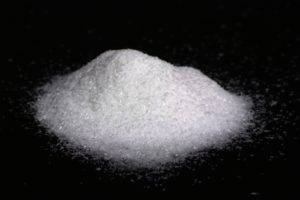 Many people think that living next to a golf course is wonderful, thinking that it's lots of open space. But... it also comes with exposure to all the pesticides used on golf course lawns (pesticides drift through the air to neighboring properties and also get into water). Unfortunately, pesticides can cause health harms, including Parkinson's disease.
Many people think that living next to a golf course is wonderful, thinking that it's lots of open space. But... it also comes with exposure to all the pesticides used on golf course lawns (pesticides drift through the air to neighboring properties and also get into water). Unfortunately, pesticides can cause health harms, including Parkinson's disease.
A recent study found that the closer a person lives next to a golf course, the higher the incidence of Parkinson's disease. In fact, living within a mile of a golf course is associated with a 126% increased risk for Parkinson's disease. The biggest risk was for individuals living 1 to 3 miles from a golf course.
Additionally, drinking water from groundwater that includes a water source from a golf course was associated with an almost two-fold increased risk for Parkinson's disease (due to drinking water contamination).
While this observational study showed an association with Parkinson's disease, other studies also show that exposure to certain pesticides increases the risk of Parkinson's disease. Some of the pesticides linked to increase risk of Parkinson's disease: 2,4-D, chlorpyrifos, MCPP, maneb, paraquat, and rotenone. (Note that pesticides such as 2,4-D are also commonly found in feed and weed products.)
Another disturbing thing to keep in mind is that American golf courses use greater amounts and more pesticides, including pesticides that are banned in Europe, compared to European golf courses. Just think of weed-free carpet-like lawns as poison lawns.
Excerpts from Medical Xpress: Golf course proximity linked to higher Parkinson's disease risk
Barrow Neurological Institute and Mayo Clinic-led researchers report an association between living near golf courses and increased Parkinson's disease (PD) risk in a study published in JAMA Network Open. ...continue reading "Living Near A Golf Course Increases Risk of Parkinson’s Disease"

 Once again artificial sweeteners are in the news, and not in a good way. New
Once again artificial sweeteners are in the news, and not in a good way. New 
 Over the past decade there has been as increasing amount of research suggesting that the herpes virus (cold sores!) is implicated in the development of Alzheimer's disease. (
Over the past decade there has been as increasing amount of research suggesting that the herpes virus (cold sores!) is implicated in the development of Alzheimer's disease. ( Exercise boosts brain function at all ages. This means that for both young and old, it is worth it to get out and engage in physical activity.
Exercise boosts brain function at all ages. This means that for both young and old, it is worth it to get out and engage in physical activity. Some people have unexplainable or mystery illnesses - whether it is unknown what exactly they have, but also how to treat the rare disease. And if somehow a doctor figures out how to treat the disease, then they may not know how to get the word out to other medical professionals. But it turns out there is a way to tell others this valuable information -
Some people have unexplainable or mystery illnesses - whether it is unknown what exactly they have, but also how to treat the rare disease. And if somehow a doctor figures out how to treat the disease, then they may not know how to get the word out to other medical professionals. But it turns out there is a way to tell others this valuable information -  Many people to this day avoid eating nuts because they view them as high calorie and high fat (umm...probably because the medical establishment said that for years). However, studies in the past decade repeatedly found that frequent nut consumption has health benefits.
Many people to this day avoid eating nuts because they view them as high calorie and high fat (umm...probably because the medical establishment said that for years). However, studies in the past decade repeatedly found that frequent nut consumption has health benefits.